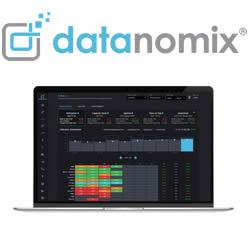Soft Tooling vs. Hard Tooling In Manufacturing
Understanding the differences between soft and hard tooling is essential for making the right decisions in product development cycles—balancing speed, investment, durability, and scale. This article explores the characteristics, benefits, and limitations of both soft and hard tooling, as well as their practical applications in today's manufacturing environment.
What Is Soft Tooling?
Key Characteristics of Soft Tooling:
Shorter lead time (faster to design and produce)
Lower upfront cost
Suitable for 10-1,000 parts (varies by material and process)
Easier to modify or repair
Less wear resistance (limited lifespan)
What Is Hard Tooling?
Hard tooling refers to tools, dies, and molds made from hardened steels or high-strength alloys, built for high-volume, long-term production. These tools are designed to withstand significant thermal and mechanical stress, offering tight tolerances and excellent consistency over thousands or even millions of production cycles.
Key Characteristics of Hard Tooling:
High durability and wear resistance
Tight tolerances and consistent quality
Longer lead times and higher cost
Requires more complex manufacturing and planning
Ideal for 10,000+ parts or extended production runs
When to Choose Soft Tooling
You need functional prototypes to test part design before committing to full-scale production.
The product lifecycle is short, and production will only last for a limited time.
You require design flexibility, such as during R&D or product iteration stages.
You need to get to market quickly (time-to-market is a priority).
The material being molded or formed is not especially abrasive or high-temperature.
Industries such as medical devices, consumer electronics, and automotive prototyping commonly use soft tooling during early-stage development.
When to Choose Hard Tooling
The volume of parts is expected to be high over a long period.
Tight tolerances and surface finish consistency are critical.
The part requires injection molding, metal stamping, or die casting with abrasive materials.
You are producing end-use parts for regulated industries like aerospace or medical, where stability over time is essential.
The product has already passed all design and function validation and is ready for full-scale manufacturing.
Hybrid Approaches: Bridging the Gap
In some cases, manufacturers opt for bridge tooling-a compromise between soft and hard tooling. For example, using hardened aluminum molds for mid-volume production (1,000-10,000 parts) provides a balance of speed and durability.
Advances in additive manufacturing also enable metal 3D printed tooling inserts, which can be integrated into aluminum tools to improve wear resistance without the full cost of steel tooling.
Conclusion
Choosing between soft tooling and hard tooling depends heavily on your production goals, timeline, budget, and product lifecycle stage. Soft tooling offers speed, flexibility, and cost-efficiency for early-stage development and limited runs. Hard tooling provides durability, precision, and consistency for long-term, high-volume manufacturing.
By understanding the strengths and limitations of both options, manufacturers can make informed decisions that optimize development cycles, minimize risk, and ensure product quality at every stage-from prototype to mass production.
Featured Product

Datanomix Production Monitoring
Datanomix Production Monitoring delivers instant visibility into your shop floor performance. Through real-time alerts, simple machine connectivity, and our kick-ass coaching, you'll catch inefficiencies early, align your team with meaningful metrics, and respond faster to issues before they escalate. The software adapts without operator input and works out of the box with purpose-built Tracks (Efficiency, Delivery, Tooling, and more). Production Monitoring arms you with the data to make more, waste less, and lead with confidence. And while real-time visibility keeps you sharp in the moment, historical insights ensure you're learning from the past to drive ongoing continuous improvement.
